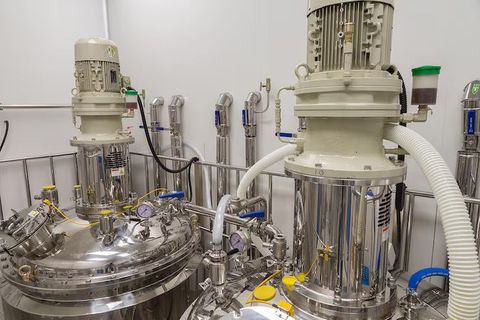
Discover the Latest Fire Safety Technology Insights, Tips, and Practical Knowledge
Fire safety technology refers to the modern systems, sensors, and monitoring tools that help prevent, detect, and respond to fire-related emergencies. What began with basic smoke alarms and manual suppression methods has evolved into a sophisticated ecosystem of intelligent detection systems, predictive analytics, automated suppression technology, and real-time risk monitoring. This field exists because fires continue to be significant hazards for homes, industries, high-rise buildings, data centers, and public infrastructure. With rapid urban development and changing environmental patterns, advanced technology is essential to identify fire risks early and enhance overall safety.
Importance – Why Advanced Fire Safety Technology Matters
Modern fire safety technology is crucial for several reasons:

-
Faster and Smarter Detection
Multi-sensor technology and AI-driven analysis detect fire conditions in early stages by analyzing heat, smoke, gas, and environmental changes. -
Reduction of False Alarms
Intelligent algorithms help distinguish between harmless activities (like cooking smoke or steam) and actual fire threats, improving building safety and minimizing disruptions. -
Remote Monitoring and Connectivity
IoT-based detectors, cloud-linked alarm panels, and real-time dashboards allow safety teams to track fire conditions from anywhere, supporting quick decision-making. -
Sustainable Suppression Methods
Newer systems such as clean-agent suppression and water mist technologies minimize environmental impact while protecting sensitive equipment and reducing water damage. -
Critical for High-Risk Environments
Industrial facilities, warehouses, and high-rise buildings rely on high-precision detection to manage large-scale risks and ensure compliance with modern safety standards. -
Enhanced Wildfire Resilience
With increasing climate-related fire events, early detection tools, atmospheric sensors, and remote surveillance systems provide quick alerts and better situational awareness.
These developments impact building owners, facility managers, safety professionals, government agencies, and communities by improving prevention, response, and resilience.
Recent Updates & Trends (2024–2025)
AI and Machine Learning for Early Detection
Recent developments in 2024–2025 show major advancements in computer vision, deep-learning smoke identification, and thermal-anomaly recognition. New models can detect fire signatures in videos, CCTV footage, and sensor datasets even under low visibility. AI-assisted panels also monitor device health, predict sensor failures, and provide automated alerts.
Intelligent Fire Alarm Panels
IoT-enabled panels are becoming mainstream. They support wireless detectors, integrate with building management systems, and allow remote troubleshooting. Multi-criteria detectors using smoke, heat, and gas analysis provide more accurate detection.
Robotics and Autonomous Response
Fire safety robots equipped with thermal cameras, high-temperature resistance, and navigation systems are being developed for hazardous locations. Robotics combined with digital twins and real-time risk assessment tools improves emergency response planning.
Green Suppression Systems
Eco-friendly suppression technologies especially water mist and clean-agent systems are gaining traction. These solutions use less water, reduce downtime, and protect electronics and sensitive environments.
Wildfire Detection from Above
New observation networks, including satellite-based monitoring, drone mapping, and AI-enabled fire towers, offer frequent fire scans, thermal hotspot detection, and real-time wildfire tracking.
Smart City Integration
Urban areas are adopting GIS-based fire risk mapping, emergency response automation, and centralized fire-safety dashboards that integrate alarms, hydrant data, and evacuation plans.
Laws, Policies & Regulatory Landscape
National Building Code (NBC) 2025 – India
The latest revisions emphasize:
-
Use of addressable fire detection systems in high-rise buildings
-
Multi-sensor detectors for improved accuracy
-
IoT integration for centralized monitoring
-
Mandatory fire-safety audits for specific building categories
-
Stricter requirements for evacuation planning and refuge areas
Factory Safety Rules (2025)
Updated regulations for industrial units include:
-
Real-time fire detection and alerting systems
-
Automated monitoring for hazardous storage areas
-
Regular third-party inspections
-
Mandatory fire-risk assessment reports
-
Enhanced training and documentation standards
Urban Infrastructure Policies
Several cities are implementing:
-
GIS-based fire hazard zoning
-
Digital NOC approval workflows
-
Fire safety compliance audits linked with building permits
-
Automated monitoring of hydrant networks
These regulations push organizations toward adopting modern fire safety technologies and maintaining continuous compliance.
Tools & Resources for Fire Safety Professionals
Here are useful tools and resources that support planning, monitoring, and compliance:
Digital and IoT Tools
-
Cloud-based monitoring dashboards for fire alarm systems
-
IoT smoke and heat detectors with mobile notifications
-
Smart building platforms integrating HVAC, security, and fire protection
Risk Assessment & Planning Tools
-
Fire risk assessment software for hazard analysis
-
Evacuation modeling tools to plan safe exit routes
-
GIS fire-mapping tools to identify high-risk urban or forest regions
Training & Simulation
-
VR and AR-based fire safety simulators for evacuation and firefighting practice
-
Digital training modules for safety officers and building staff
Compliance Resources
-
Fire audit templates
-
Equipment maintenance logs
-
Safety signage and emergency planning layouts
These tools improve accuracy, preparedness, and compliance with modern safety requirements.
FAQs
Q1: What makes AI-based fire detection more effective?
AI systems analyze multiple data points heat, smoke patterns, gas readings, and visuals to identify actual fire signatures faster and with higher accuracy, reducing false alarms and improving early detection.
Q2: Are IoT-based fire alarms reliable for large buildings?
Yes. IoT detectors offer consistent data transmission, self-diagnostics, and real-time monitoring, making them suitable for high-rise buildings, industrial facilities, and remote sites.
Q3: How is wildfire detection improving in 2025?
Modern wildfire detection uses satellite imagery, thermal sensors, drones, and AI analytics to identify heat anomalies early, track fire spread, and support emergency teams.
Q4: Why are water mist systems becoming popular?
They use ultra-fine droplets that absorb heat efficiently, minimize water usage, and reduce damage to equipment—making them ideal for data centers, museums, and commercial spaces.
Q5: How do new fire safety regulations impact businesses?
Businesses must adopt improved detection systems, maintain digital safety records, undergo scheduled audits, and ensure that buildings meet evacuation and suppression requirements.
Conclusion
Fire safety technology in 2025 is entering a new era driven by AI, IoT, intelligent sensors, autonomous systems, and advanced analytics. These innovations not only help detect fires earlier but also reduce false alarms, streamline monitoring, and strengthen wildfire management. Regulatory updates such as NBC 2025 and new industrial safety rules further encourage the adoption of these technologies.
As buildings become smarter and environmental risks grow, staying informed about modern fire safety trends is essential. Organizations that embrace these technologies enhance resilience, ensure compliance, and significantly improve safety outcomes for people and property.










